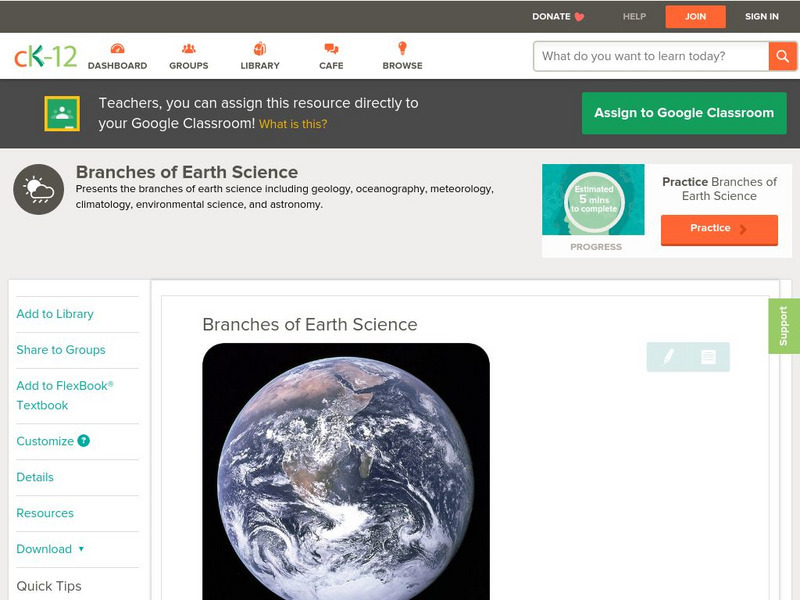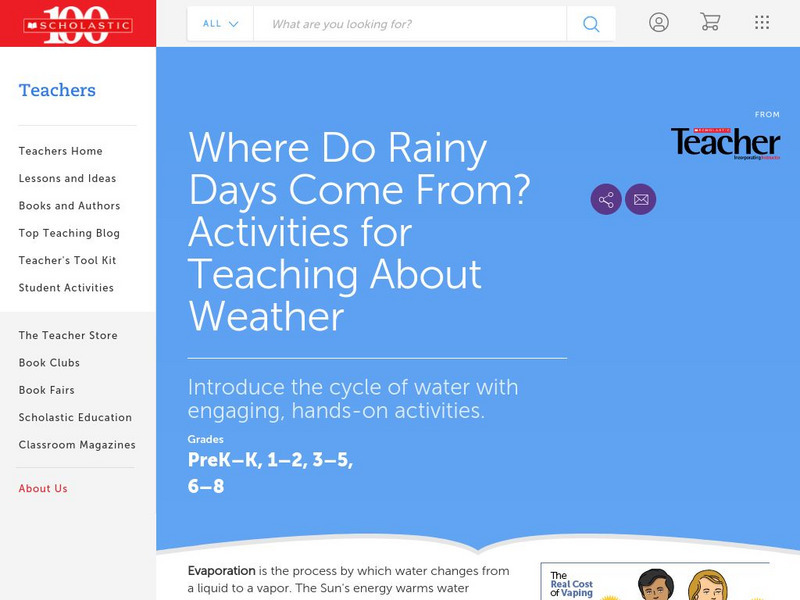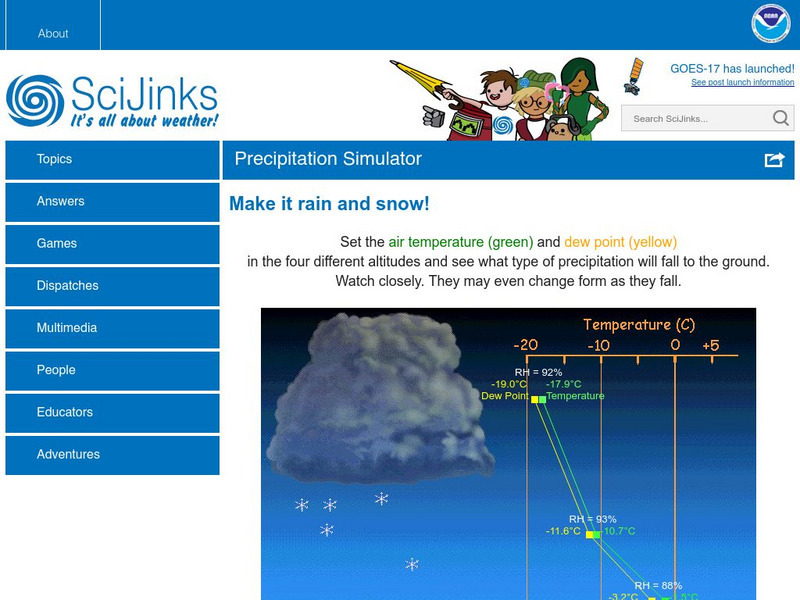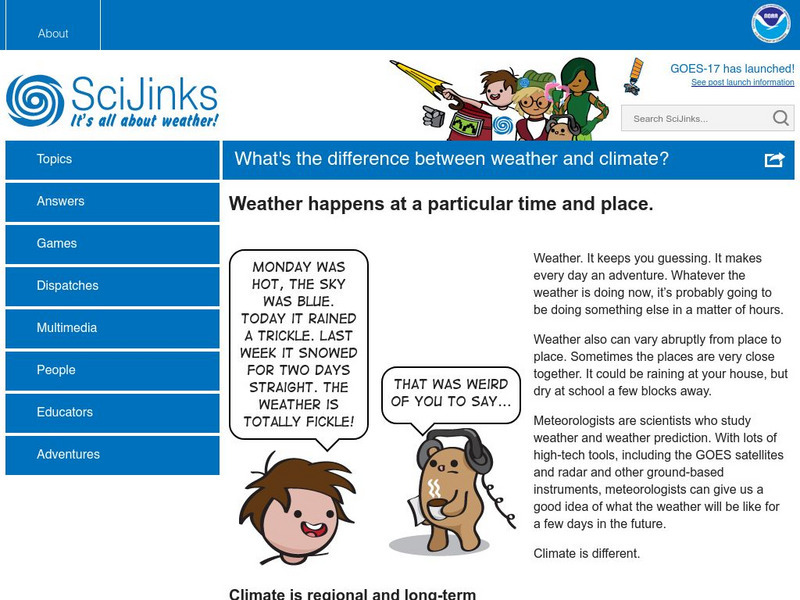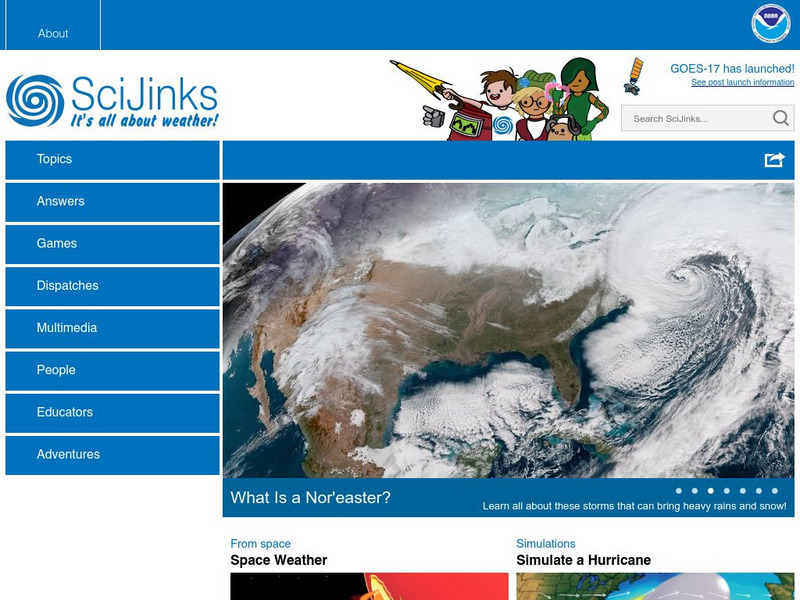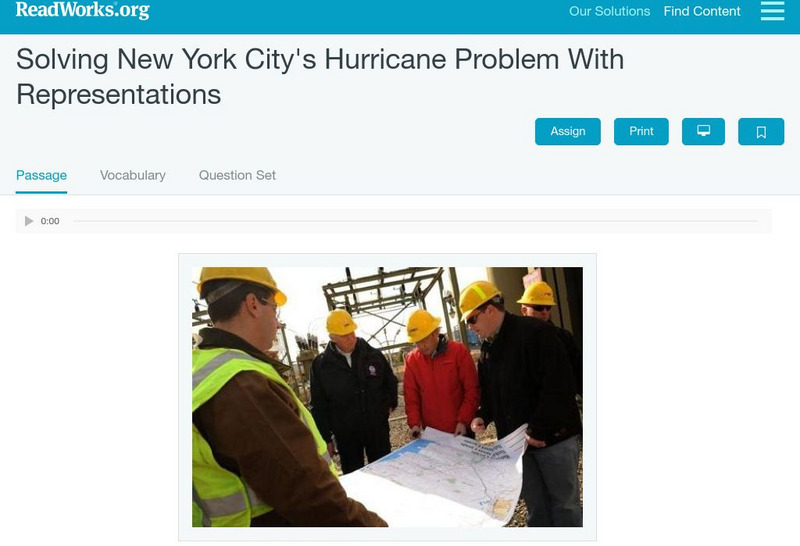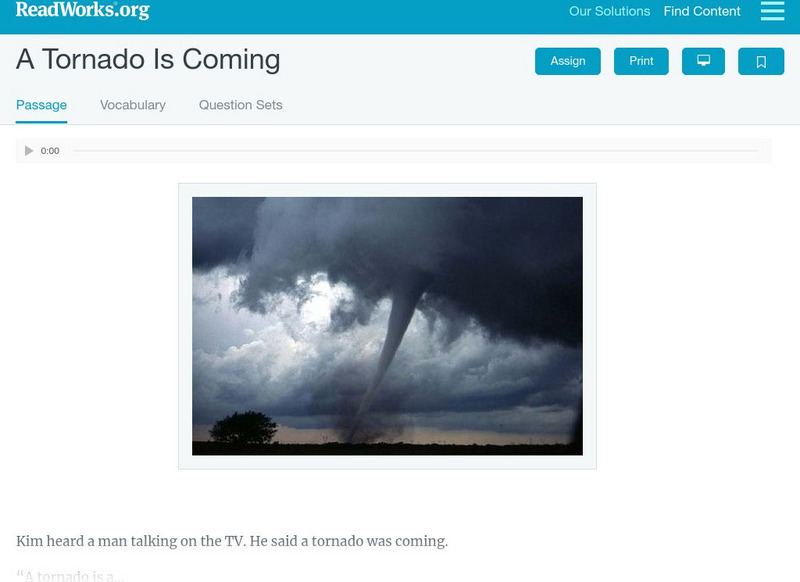CK-12 Foundation
Ck 12: Earth Science: Blizzards
[Free Registration/Login may be required to access all resource tools.] Describes how blizzards form.
CK-12 Foundation
Ck 12: Earth Science: Collecting Weather Data
[Free Registration/Login may be required to access all resource tools.] Describes the various instruments that scientists use to collect weather data.
CK-12 Foundation
Ck 12: Earth Science: Introduction to Weather
[Free Registration/Login may be required to access all resource tools.] Covers the definition of weather and the factors that make up weather.
Scholastic
Scholastic: Where Do Rainy Days Come From?
Find out more about rainy days when you check out this resource, which features hands-on interactive activities, experiments, fun facts, and more.
Annenberg Foundation
Annenberg Learner: What Forces Affect Our Weather?
A great starting point for learning about the weather and for finding help starting your own investigation of what affects the weather. Site is organized into the following sections: "The Atmosphere," "The Water Cycle," "Powerful...
Other
Comiskey Park
The official site for Comiskey Park provides all needed resources for anyone, including events, facilities, virtual tours and more!
Can Teach
Can Teach: Songs and Poems
This site features an extensive list of poems and songs for every event during the school year. Explore the seasons, colors, holidays, and more.
NASA
Sci Jinks: What Is El Nino?
The weathermen and women warn of El Nino every so many years. Find out what that actually means.
NASA
Scijinks: Clouds, Water, and Ice
Classroom activities, photographs, and printable posters featuring clouds, water, and ice.
NASA
National Aeronautics and Space Administration: Scijinks: Atmosphere
Activity describing how the Earth's atmosphere was formed, why it stays close to the Earth, and why the sky is blue.
NASA
Sci Jinks: Precipitation Simulator
Manipulate the dew points and temperature points in the activity to create different forms of precipitation.
NASA
Sci Jinks: What Makes It Rain?
or snow or sleet? Check out this concise explanation and illustration of the water cycle.
NASA
Sci Jinks: What's the Difference Between Weather and Climate?
Weather and climate may be lumped together when meteorologists talk about them, but they are two different things. This brief article identifies how to differentiate the two.
NASA
Scijinks: It's All About Weather
Scijinks offers interactive activities covering weather. Find out how weathermen predict the weather, write a fun book about weather, pick a science project, and much more.
USA Today
Usa Today: Weather: u.s. Weather Forecasts
Weather forecasts for all 50 states, Puerto Rico, the US Virgin Islands, and the islands of American Samoa and Guam. These enable students to do comparison studies and/or receive current weather forecasts.
Read Works
Read Works: Solving New York City's Hurricane Problem With Representations
[Free Registration/Login Required] An informational text about working together to prepare for a natural disaster. A question sheet is available to help students build skills in reading comprehension.
Read Works
Read Works: The Frost
[Free Registration/Login Required] This site includes a poem about frost. This passage is a stand-alone curricular piece that reinforces essential reading skills and strategies and establishes scaffolding for vocabulary learning. It...
Read Works
Read Works: Wild Weather
[Free Registration/Login Required] Students read about different types of March weather including: clouds, blizzards, thunder, lightning, and rainbows. A question sheet is available to help students build skills in cause and effect.
Read Works
Read Works: Weather: Air Patterns
[Free Registration/Login Required] An informational text about wind patterns and how they relate to clouds, storms, and lightning. A question sheet is available to help students build skills in reading comprehension.
Read Works
Read Works: When Lightning Strikes
[Free Registration/Login Required] An informational text about lightning and how to stay safe when it strikes. A question sheet is available to help students build skills in reading comprehension.
Read Works
Read Works: Wild Waves
[Free Registration/Login Required] An informational text about huge waves created by an undersea ridge off the coast of California called Cortes Bank. A question sheet is available to help students build skills in reading comprehension.
Read Works
Read Works: Cloudy and Sunny
[Free Registration/Login Required] A literary text about a little girl named Maria who learns that the sun feels warmer when the clouds are gone. A question sheet is available to help students build skills in reading comprehension.
Read Works
Read Works: Forecasting Severe Weather to Communities Helps Them Prepare
[Free Registration/Login Required] This nonfiction passage gives information about how communities can prepare for weather disasters. This passage is a stand-alone curricular piece that reinforces essential reading skills and strategies...
Read Works
Read Works: A Tornado Is Coming
[Free Registration/Login Required] This realistic fiction passage tells the story of a family taking cover after learning that a tornado is nearby. This passage shares basic facts about tornadoes. This passage is a stand-alone curricular...


